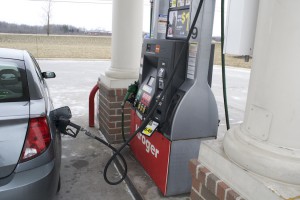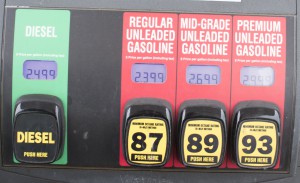Demand for gasoline in October reached its highest levels since 2006 while supply continues to drop, leading to a surge in gasoline prices, particularly in the Midwest.
At the same time a new wave of unrest in the Middle East triggered by signs of instability in Saudi Arabia also has begun to drive up the price of crude oil across the globe, which could lead to even higher prices at the pump in the future.
The latest gasoline demand measurement is the highest for the end of October since 2006. At $2.53, today’s gas price is six cents more than a week ago, two cents more than a month ago and 31 cents more than a year ago, according to the Energy Information Administration.
“October has seen strong demand numbers likely, in part, due to consumers taking advantage of the unseasonably warm weather rather than spending time indoors,” said Jeanette Casselano, AAA spokesperson.
“As consumers fill up their tanks more frequently, we are seeing supply levels tighten and gas prices increase. However, we don’t expect this increase to be long-term.”
The national gas price average during the second half of October was relatively stable, fluctuating a penny or two until Oct. 31. Since then, the national price has seen upward movement, primarily resulting from increased demand.
The nation’s top 10 largest weekly increases are: Michigan where the price increased by 21 cents per gallon, Ohio where it increased 20 cents, Illinois where it increased 19 cents, California where the price increased 17 cents, Wisconsin increased 16 cents per gallon, Indiana where it climbed 14 cents, Missouri where it went up 11 cents, Kentucky where it went up 10 cents, Minnesota where it went up 8 cents and Nebraska where it went up 7 cents.
The West Coast continues to lead the U.S. among most expensive markets.
Six of the top 10 most expensive markets in the country are found in this region: California with at $3.21 per gallon, leading the way. Most prices in the region have risen during the past week, with California and Alaska seeing the largest increases of markets in the region.
Drivers in California are likely to see pump prices increase due to new gasoline taxes that were imposed on Nov. 1. The tax rate for gasoline increased 12 cents per gallon, from 29.7 cents per gallon to 41.7 cents per gallon.
Compared with a year ago, more than a dozen Great Lakes and Central states are paying at least 25 cents more a gallon to fill up their tanks. Topping the year-over-year increases list are Indiana where prices have gone up 60 cents per gallon, Illinois up 59 cents, Michigan up 54 cents, Ohio up 52 cents, Wisconsin up 51 cents, Minnesota up 44 cents, Missouri up 43 cents and Kansas up 40 cents per gallon.
Last week, hit West Texas Intermediate crude hit a new 2017 high at $54.54 per barrel and the market will likely build on those gains this week. At the close of Friday’s formal trading session on the NYMEX, WTI settled up $1.10 a barrel at $55.64 a barrel. The latest EIA report showed major inventory draws and increased exports, both of which have helped push oil prices higher.
The combination of rising demand and increasing exports of crude oil from the U.S. has given market observers renewed expectations that ioil prices will move higher in the weeks to come as supplies appear to grow tighter and demand remains strong, fueled by oil demand growth in key export markets, AAA noted.



Not shooting the message, but not sure where the warm weather was but in my neck of the woods it was cooler, and the prices still increased. In some areas more than listed in the article I might add; I’ve seen 30 cent jumps in a week, then a reverse of 5 cents, then another +20 cent jump. Ridiculous!!
I am glad the “switch-over to winter blend” excuse, I mean reason, wasn’t given by the petro guys as that has been disproven decades ago.